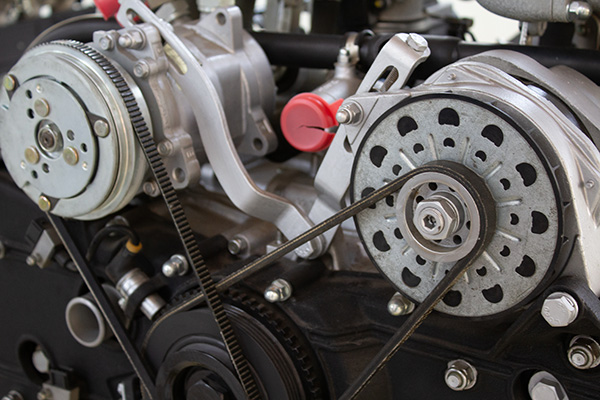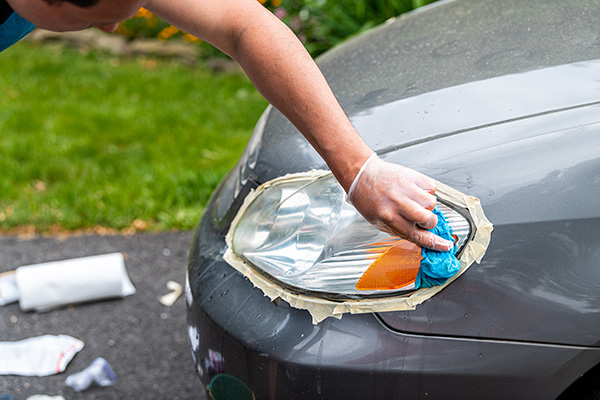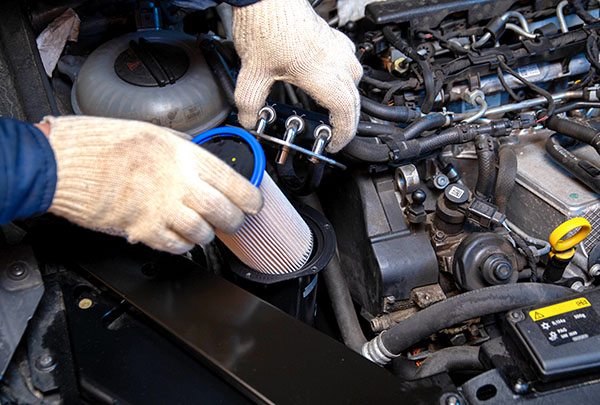Posted on 7/26/2024

Transmission maintenance is one of those things that car owners often overlook until it's too late. But when it comes to keeping your vehicle running, few things are as important as a well-maintained transmission. Among the various maintenance tasks, technicians often recommend a transmission flush. But is it really necessary? The Transmission in a Car Before we can decide if a transmission flush is necessary, it's important to understand what the transmission does. Essentially, the transmission transfers power from the engine to the wheels, allowing your car to move at different speeds. There are two main types of transmissions: manual and automatic. Regardless of the type, the transmission contains a complex system of gears and components that require clean, high-quality transmission fluid to function properly. What is a Transmission Flush ... read more
Posted on 6/27/2024

Keeping your car in top condition is essential for safe driving and compliance with state regulations. If you're a driver in Colorado, understanding the vehicle inspection requirements can sometimes feel like navigating a maze. However, knowing what inspections are necessary and when they're required is crucial for staying on the right side of the law and ensuring your vehicle's performance. Let's break down everything you need to know about Colorado's vehicle inspections to help you stay informed and prepared. Types of Vehicle Inspections in Colorado In Colorado, vehicle inspections fall primarily into two categories: emissions inspections and safety inspections. Each serves a different purpose and has specific requirements. Emissions Inspection The purpose of an emissions inspection is to ensure that your vehicle meets the state's air quality standards. Colorado's Emissions Control Program (ECP) is designed to reduce air pollution and ... read more
Posted on 5/28/2024

Navigating rush hour traffic on Interstate 25 (I-25) can be daunting, but with the right strategies, you can ensure a safer and less stressful commute. Rush hour traffic, especially on busy highways like I-25, can lead to congestion, delays, and an increased risk of accidents. Whether you're a daily commuter or an occasional traveler, adopting the best practices for navigating I-25 during rush hour can help you reach your destination safely and efficiently. Understanding Traffic Patterns Before hitting the road, familiarize yourself with the typical traffic patterns on I-25 during rush hour. It typically occurs during the morning and evening peak commuting times, with traffic congestion reaching its peak around 7-9 a.m. and 4-6 p.m. Knowing when congestion is at its peak can help you plan your commute more effectively and avoid unnecessary delays. Staying informed about any ongoing construction or road closures along your route can help you plan alternative paths ... read more
Posted on 4/27/2024

When it comes to the intricate workings of our vehicles, the realm of belts often confuses many drivers. We've all heard of timing belts and serpentine belts, but what exactly sets them apart? Timing Belt vs. Serpentine Belt 1. Anatomy and Functionality In the automotive ecosystem, timing belts and serpentine belts play distinct yet equally vital roles. The timing belt, also known as a cambelt or timing chain, is a toothed rubber belt responsible for synchronizing the rotation of the engine's crankshaft and camshaft(s). This synchronization ensures precise valve timing, facilitating efficient combustion and optimal engine performance. On the other hand, the serpentine belt, aptly named for its snake-like winding path, is a flat, ribbed belt that drives multiple engine components such as the alternator, power steering pump, and air conditioning compres ... read more
Posted on 3/28/2024

As you navigate the roads at night, you may have noticed that your headlights appear fuzzy or clouded. This common issue not only diminishes the aesthetic appeal of your vehicle but can also compromise visibility, posing a safety concern. Causes of Fuzzy HeadlightsOxidation and UV Exposure Over time, your headlights are exposed to harsh elements, including sunlight and UV rays. This exposure leads to oxidation, causing the outer layer of the headlights to become cloudy and hazy. Environmental Contaminants Road debris, pollution, and other environmental contaminants can accumulate on your headlights, contributing to the haziness over time. Incorrect Cleaning Using abrasive cleaners or rough materials when cleaning your headlights can scratch the surface, making them more prone to clouding ... read more
Posted on 2/27/2024

In the vast vehicle maintenance ecosystem, the health of exterior lights often takes a back seat. Yet, they are not just accessories - they are fundamental to safety and communication on the road. Let's "illuminate" why servicing and checking your vehicle's exterior lights is not only recommended but essential. The Vital Role of Exterior Lighting Exterior lights do more than illuminate our steps; they deter potential intruders, highlight our homes' architectural features, and create a welcoming atmosphere for visitors. Their functionality extends beyond the mere provision of light; they are an integral part of our home's safety, security, and beauty. Recognizing Signs of Wear and Tear Like any other outdoor element, exterior lights are exposed to the whims of nature. Over time, they can succumb to weather conditions, leading to wear and tear that not only diminishes their performance but also their lifespan. Regular checks ... read more
Posted on 1/30/2024

Owning a Ford means more than just driving a reputable brand; it means being part of a legacy of quality and durability. However, following the best maintenance practices is crucial to ensure your Ford stays in top condition. But don't worry, because below you will find exactly that! 1. Oil ChangesRegular oil changes are the cornerstone of any vehicle maintenance program, especially for Fords. Oil lubricates the engine's moving parts, reducing friction and wear. Over time, oil breaks down and becomes less effective, making regular changes essential. For most Ford models, changing the oil every 5,000 to 7,500 miles is recommended, though this can vary based on your driving habits and the oil type. 2. Tire Maintenance and Rotation Tires are your direct link to the road, and their care is paramount. Regular tire maintenance is vital, including check ... read more